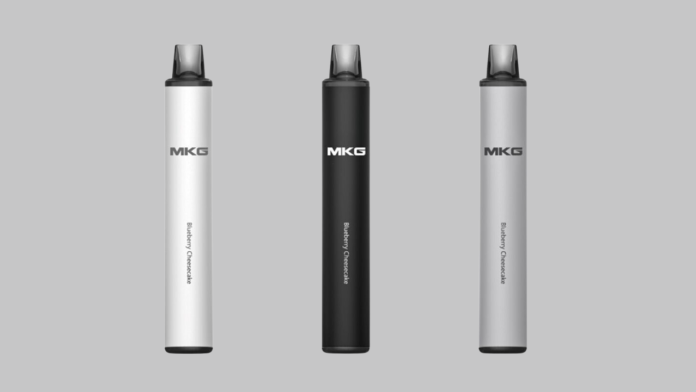Society has also witnessed vaping as a safer way of taking nicotine instead of the conventional smoking. However, the shift to the usage of e-cigarettes also resulted in the appearance of a variety of complex new regulatory concerns worldwide. These laws must be known by consumers and manufacturing companies to ensure adherence to them and prevent their misuse. Overall, this article seeks to give an understanding of vaping laws across the globe while highlighting the importance of being conversant with the local laws concerning vaping and how MKG Vape conducts its business within such legal frameworks.
Overview of Global Vaping Regulations
Vaping laws differ from country to country depending on the health policies within that country, the general culture of nicotine products, and regional commercial factors. Some jurisdictions have adopted vaping as a smoking cessation method, with others implementing very restrictive regulations due to health risks. Some of these regulations entail consumer safety measures, restrictions on branding and labeling, minimum age, and spots where the product can be used. Users stay aware of these rules and, therefore do not fall afoul of the law, and the use of vapes is made safer.
Vaping Laws by Region
North America: Regulations and Trends
As for vaping laws in North America, there are ongoing shifts and changes. In the United States, the Food and Drug Administration FD imposes the regulation of vaping products, including requiring a premarket tobacco product application where manufacturers have to demonstrate that their products are suitable for the protection of the health of the public. Local governments may also set other regulations, for example, restrictions on flavors and the age limit. In Canada, the sale and use of vaping products are regulated by Health Canada primarily with aims to protect product safety and to minimize vaping among youth. Both countries have tendencies toward further legislation to lower youth vaping rates, which can be considered as positive.
Europe: Varying Policies Across Countries
The continent in question hosts a rather heterogeneous legal environment regarding vaping. The European Union has adopted the Tobacco Products Directive (TPD), which outlines general measures such as the restriction of nicotine content and requirements to display health warnings on products. However, it often also bears the free right of individual member states to provide even tighter measures. For example, adopting nations as e-cigarettes a smoking cessation product as in the case of the UK, whereas restricted measures for the use of e- cigarettes as in Norway and Turkey. Any business is obliged to understand these disparities to be able to thrive in the European context effectively.
Asia: Strict Regulations and Bans
As for Asia, they tend to have more restrictions on vaping or even total bans on vaping. Most of the global states, such as Singapore, Thailand, and India, have put in place strict smoking bans on e-cigarette products due to health and youth protection. Conversely, Japan permits the sale of heat-not-burn devices but has limitations on the purchase of e-liquids containing nicotine. The manufacturing of vaping products has been a common occurrence in China. However, the country’s standards have been upped to match the global standards. Regarding legal issues, vapers and related businesses should take extra precautions to abide by these stringent laws.
Other Regions: Emerging Laws and Trends
In other parts of the world, vaping legislation has yet to be instituted or is still evolving. There are different strategies in Latin American countries: some, such as Brazil, apply a complete ban while others, such as Mexico, increase the regulation step by step. The regulation here is comparatively less stringent but the African countries such as South Africa are moving towards more strict measures. Oceania has also liberalized laws, with Australia banning access to nicotine e-cigarettes but New Zealand encouraging the use of vaping as a harm reduction method.
Impact of Regulations on Vapers
Compliance Requirements
To the vapers, it is always advisable to be familiar with these rules in the area since ignorance of the law might lead to fines, confiscation or other legal consequences. These are the areas of prohibited usage, allowed age group, and permissible forms of products. It helps make vaping safer and contributes to the achievement of public health goals.
MKG’s Compliance with Global Standards and Regulations
As a leading vape technology provider, MKG Vape operates under high global standards. The company also guarantees that its products conform to safety and quality standards in well over 80 countries, which is further evidence of its respect for social responsibility in its manufacturing processes as well as consumer safety. You can go now and check their standard compliance.
MKG Vape Factory’s Global Reach
MKG Clients from over 80 Countries
Currently, the company has expanded its products to over 80 countries and has gained a competitive market position. This extensive reach is facilitated by the technology used by the manufacturers, innovative designs, and compliance with international standards.
How MKG Navigates International Regulations
Another strength of formation at MKG is their ability to be active in dealing with various forms of regulations. It has a separate regulatory affairs department that identifies legal requirements and restrictions in different countries. Thus, MKG remains loyal to the principles of providing quality and reliable service with the help of keeping up with the latest changes in regulation.
Conclusion
Knowledge of vaping laws across the globe is crucial for vapers and manufacturers. One of the benefits of knowing about the local laws is that it assists in preventing legal troubles and encourages correct usage. Thus, the success of companies like MKG Vape proves that compliance with these laws in advance can help in the development of international markets. It allows you to become a part of positive change by promoting legislation that can regulate the practice of vaping while requiring evidence-based approaches.










